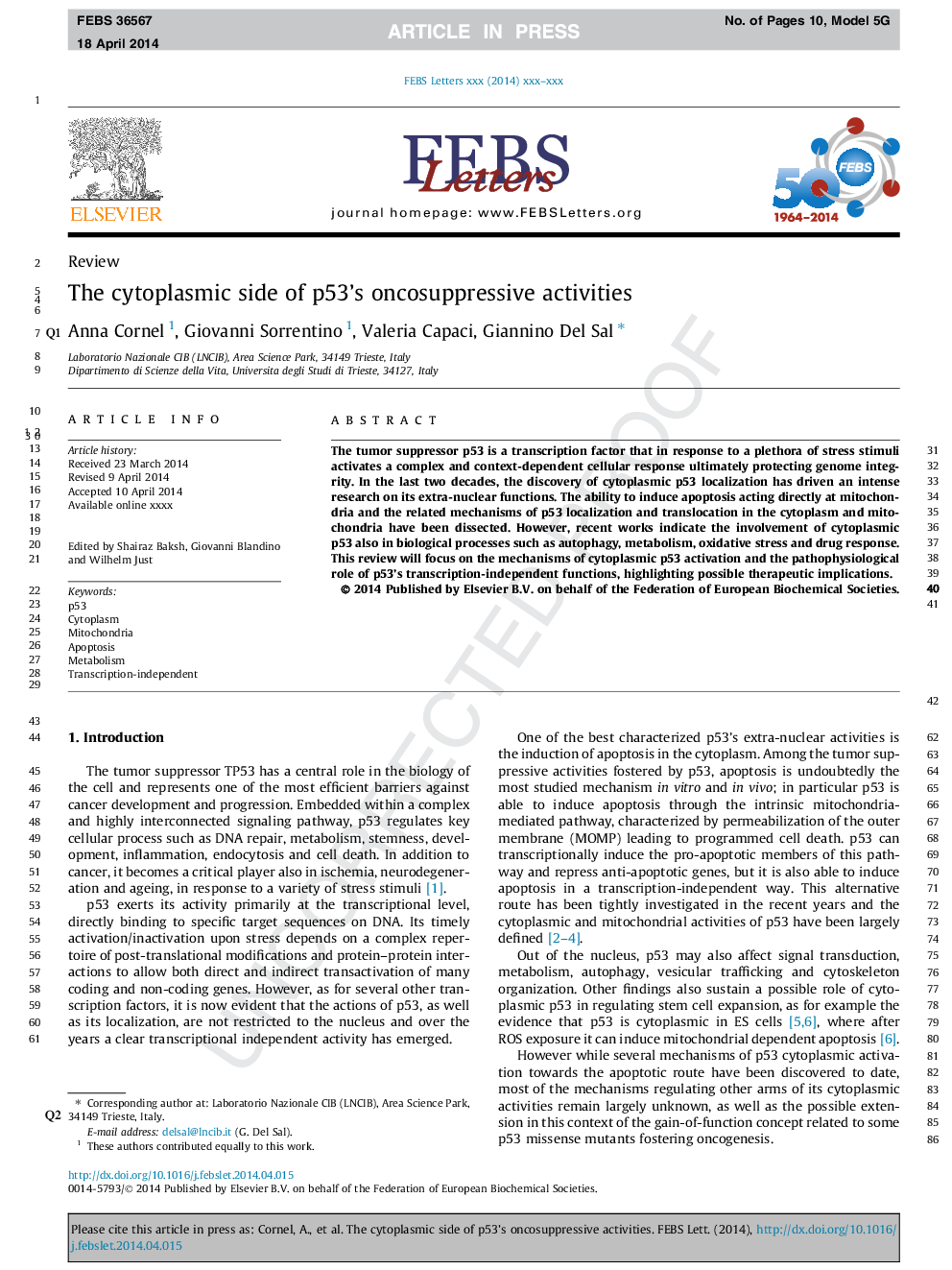| Article ID | Journal | Published Year | Pages | File Type |
|---|---|---|---|---|
| 10870216 | FEBS Letters | 2014 | 10 Pages |
Abstract
The tumor suppressor p53 is a transcription factor that in response to a plethora of stress stimuli activates a complex and context-dependent cellular response ultimately protecting genome integrity. In the last two decades, the discovery of cytoplasmic p53 localization has driven an intense research on its extra-nuclear functions. The ability to induce apoptosis acting directly at mitochondria and the related mechanisms of p53 localization and translocation in the cytoplasm and mitochondria have been dissected. However, recent works indicate the involvement of cytoplasmic p53 also in biological processes such as autophagy, metabolism, oxidative stress and drug response. This review will focus on the mechanisms of cytoplasmic p53 activation and the pathophysiological role of p53's transcription-independent functions, highlighting possible therapeutic implications.
Related Topics
Life Sciences
Agricultural and Biological Sciences
Plant Science
Authors
Anna Comel, Giovanni Sorrentino, Valeria Capaci, Giannino Del Sal,
